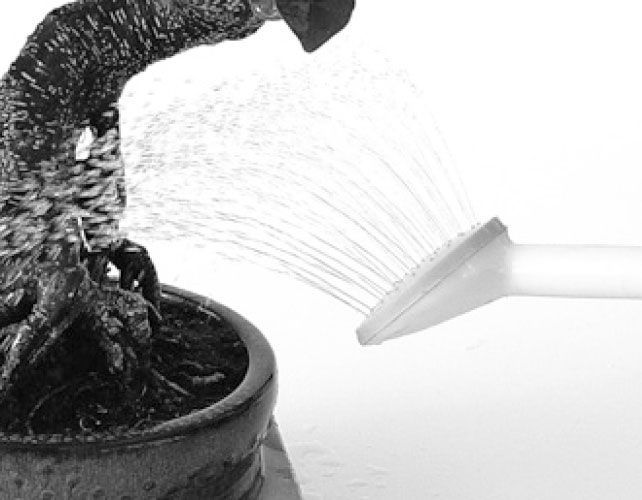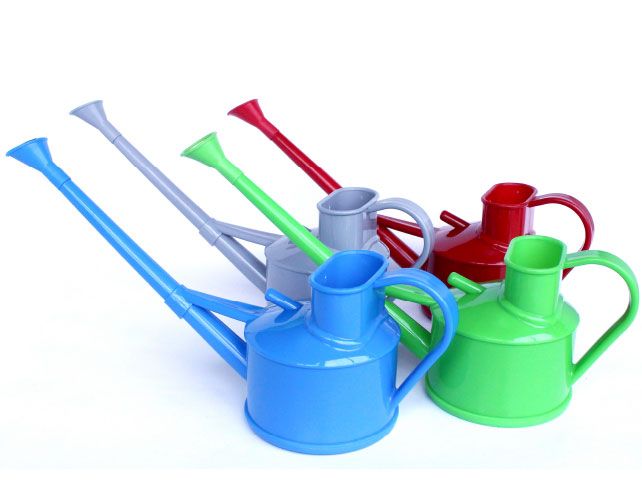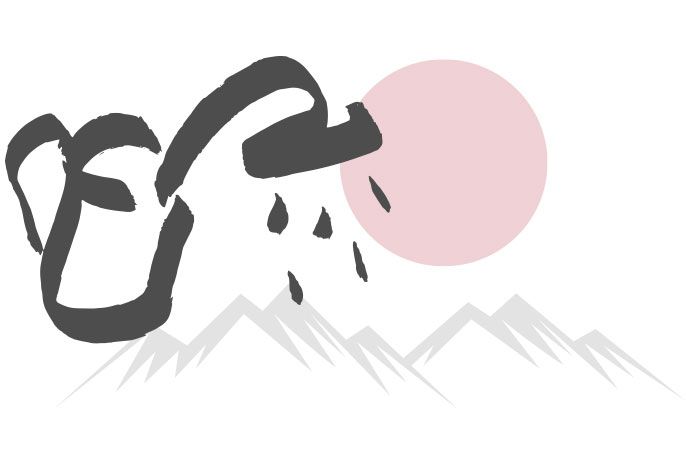
Why do we need water?
Water is essential for any living being.
Plants living in a pot depend on us to grow. Roots need water and air so you have to let the substrate dry between each watering. The key: frequency and quality.

Frequency of watering
The frequency of watering depends on the type of bonsai, the soil type, the sun the plant receives, etc.
In general, we will water when the first layer of the soil begins to dry, which is evident by the pale colour and brightness loss of the topsoil, and also if we move our fingers over and we note that the surface is dry.
How should we water a bonsai?
1. Watering
We will use a watering can with fine holes for the water to fall slowly, in order not to lose water by the edges of the pot. We will water thoroughly until the water runs out through the drainage holes. We will wet the trunk and the branches as if it was raining.
2. Immersion
Submerge the bonsai in water. The level of water should be just above the surface of the soil. Leave the bonsai submerged for five minutes until the bubbles stop.
We will dip bonsai in a container with water for five minutes, until we no longer see air bubbles. The water level must exceed the surface of the soil. This system will allow us to hydrate fully if we have forgotten to water for some time. In addition, we will verify if the frequency of watering is adequate because, if we find that a large number of bubbles escape out of the pot, we will know that we need to water more frequently; if, on the contrary there is very little bubbles, it means that we water too frequently.
If we water by immersion, from time to time we have to use a watering can, so that the salt of the soil does not accumulate at the Surface of the substrate.
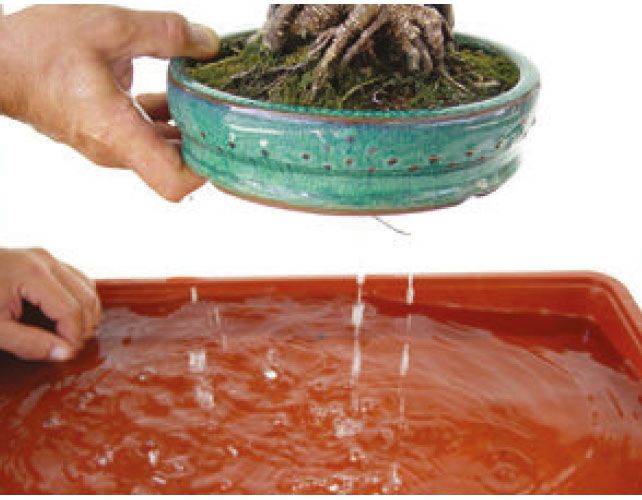
3. Hidrobonsai System
HIDROBONSAI is a system developed by Mistral Bonsai as a supplement to watering the bonsai.
HIDROBONSAI guarantees that the bonsai will get all the water it needs in circumstances where it is not possible to perform a traditional watering.
HIDROBONSAI is especially recommended:
- For indoor species such as Ficus, Zelkova, Ligustrum … To meet the water requirements, especially in spring and autumn.
- For other indoor and outdoor species: vacation, weekend, or as a complement to regular watering.
- For outdoor varieties such as Acer, Pyracantha, Cotoneaster and fig: it can be used from April to August, keeping the same location.
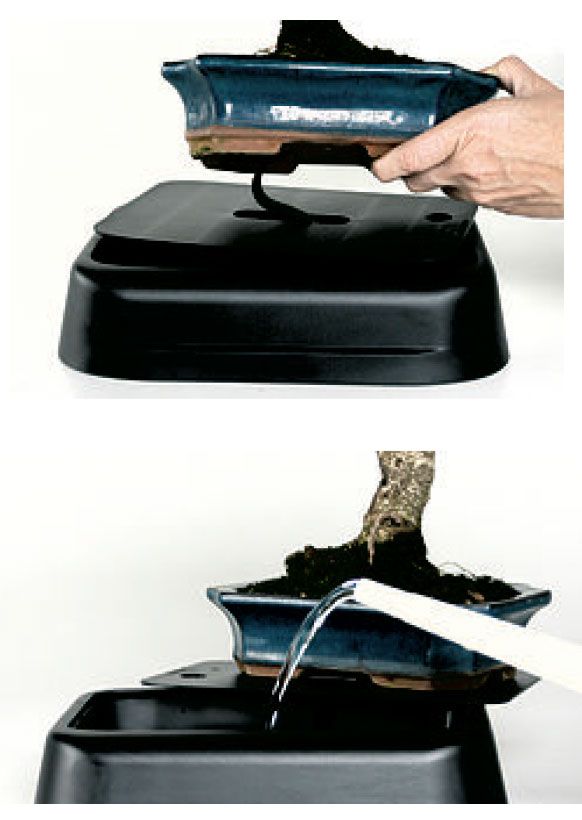
HOW TO INSTALL IT?
Slightly separate the pot from the tree, pressing gently with your fingertips, through the drainage holes. Introduce, using tweezers or a pencil, one end of the strand in one of the holes of the pot, ensuring that the contact with the soil will be suitable.
Place the shaft again in the pot as usual and spray the bonsai thoroughly. Place the bonsai on the cover of the Hidrobonsai and pass the other end of the strand through the central hole, being careful that the strand does not fold. Fill the Hidrobonsai tank with water and place cover. Set the bonsai above and check that the strand remains in the water.
HOW TO USE IT?
The water deposit of the HIDROBONSAI slowly delivers water to the bonsai, allowing watering only once every 10 or 30 days depending on the species and size of the pot. For all bonsai in general, you should only water when all the water from the deposit is gone.
HOW TO WATER YOUR TREE WHEN IT´S PLACED ON AN HIDROBONSAI?
Drizzle over the pot until the soil is very wet. The remaining water falls into the deposit and does not dirty the furniture. Finish filling the deposit.
IMPORTANT:Even if watering is not necessary, you should check the water level in your HIDROBONSAI at least once a week.
PRACTICAL ADVICE
- Inside, place the bonsai at a maximum distance of 60 cm from a window.
- In summer, avoid direct sunlight.
- Do not place the bonsai near a heat source such as a TV or radiator.
- Every 15 days, change the orientation of the plant so that the light reaches all sides of the bonsai in a uniform manner.
- For long periods (several months), place the bonsai on the cover of an Hydrobonsai and both on a large water deposit.
- As long as there is water in the deposit, the system will work properly.
4. Spray
Spraying is watering the leaves of the bonsai with water dispersed under pressure in the form of light rain.
Trees that live in fields often receive the morning dew, which is an important energy source for plants, which absorb the water through the leaves.
In rustic mountain valleys, the amount of water collected from the dew, come to surpass those of water received by the rain, which gives us an idea of the importance that the dew has for these plants.
Bonsai living in homes do not receive rain water nor dew and leaves are covered with dust.
It is important to clean the leaves that are exposed to dust and to vitalize the trees that live in dry environments, spraying the leaves from time to time.
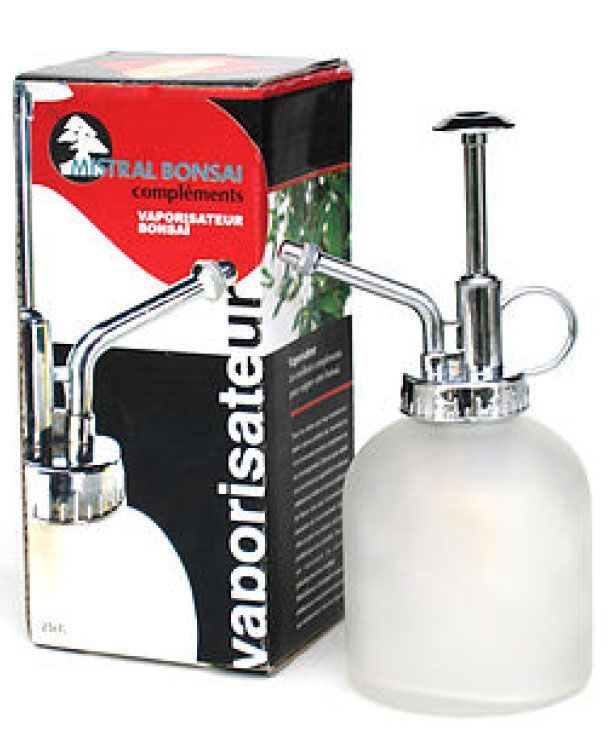
WHEN TO SPRAY?
If you just want to clean the leaves spraying once a week is generally enough. If what we want is animate a tired bonsai, it will be necessary to spray the leaves every day. The best time to spray it is at sunset. Avoid spraying the bonsai in full sun at noon to avoid adverse effects that may occur.
HOW SHOULD WE SPRAY?
We must spray the plants with a spray or with a garden hose that has a rose that will launch the water like a fine rain. They should be sprayed from the top down and bottom up, so that the water reaches all the leaves of the tree.
How should the watering water be?
The best for watering is to do it with rain water or spring water, for they are very good quality for watering.
Water from the public network is normally useful, but we take into account that we have to leave it in a container for 24 hours so that the chlorine can evaporate. If there is too much salinity in the water (very hard water), we should not use it for watering bonsai nor the rest of plants.
